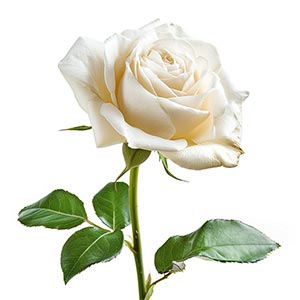The White Rose, a symbol of purity and innocence, has a long-standing history in both cultural symbolism and perfumery. Revered for its pristine beauty, the white rose has been a fixture in gardens and floral arrangements for centuries, celebrated in literature and art for its delicate appearance and subtle fragrance. In the realm of perfumery, White Rose is cherished for its soft, refined, and subtly sweet aroma. Unlike its more intensely fragrant cousins, the red or pink roses, white roses offer a lighter, more understated scent profile. This makes them a popular choice in fragrances that aim for elegance and subtlety, often used to add a gentle floral touch without overwhelming the senses. The use of White Rose in fragrance compositions is often indicative of sophistication and understated luxury. Its scent is associated with freshness, purity, and a natural, unobtrusive elegance. Found predominantly in the Floral fragrance family, White Rose adds a touch of grace and refinement, blending beautifully with other floral notes, as well as with fresh, green, and even light woody scents.
Natural or Synthetic?
White Rose essence is typically extracted through steam distillation or solvent extraction, capturing its delicate fragrance. Due to the subtlety of its natural scent, synthetic versions are also used in perfumery to enhance the aroma and ensure consistency in the fragrance profile.
Fragrance Families White Rose Most Commonly Found In
Show fragrances that contain White Rose as a note


